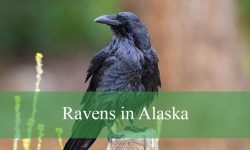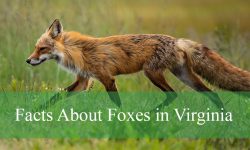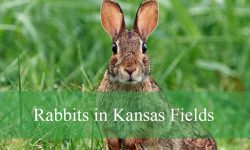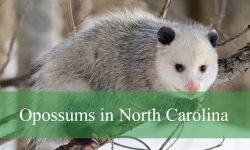Feral pigs, often called wild pigs, have become one of Texas’ most challenging wildlife issues. Their presence impacts both the environment and agricultural lands, making them a concern for farmers and conservationists alike.
These animals are mainly descendants of Eurasian wild boars and domestic pigs, which have escaped or been released over time. Their adaptability allows them to thrive in diverse habitats across the state, from forests to grasslands.
Identifying the different types of feral pigs in Texas is essential for managing their populations. Knowing their characteristics, behavior, and distribution helps in developing effective strategies for control and conservation.
Different Types of Feral Pigs Found in Texas
Eurasian Wild Boar

Physical Characteristics
The Eurasian wild boar is a strong and muscular animal, easily recognized by its coarse, bristly coat that ranges from dark brown to nearly black. Adult males, often called boars, usually weigh between 200 and 400 pounds, while females are somewhat smaller. One of their most distinctive features is the mane running along their neck and shoulders, giving them a rugged appearance. Their tusks are sharp, prominent, and continuously grow throughout their lives, serving as both weapons and tools for rooting in the ground.
Behavior and Habitat
Primarily nocturnal, Eurasian wild boars are mostly active at night and tend to live alone or in small family groups known as sounders. Highly adaptable, they can survive in a variety of habitats, including dense forests, open grasslands, and wetlands. These pigs are notorious for their rooting behavior, where they dig deep into the soil searching for food. This activity can significantly disturb natural vegetation, damage crops, and even alter soil structure, making them a major ecological concern.
Diet and Feeding Habits
Eurasian wild boars are omnivorous and opportunistic feeders, consuming nearly anything available. Their diet includes roots, tubers, acorns, fruits, and other plant material, alongside small animals, insects, and carrion when available. This flexible diet allows them to thrive in diverse environments but also makes them highly destructive to agricultural lands and native vegetation.
Reproduction
These pigs have a rapid reproductive cycle, contributing to their invasive nature. Female boars can reach sexual maturity as early as six months and typically produce litters of four to six piglets. Breeding can occur throughout the year, which enables their populations to grow quickly if left unmanaged.
Distribution in Texas
Eurasian wild boars were initially introduced to Texas for hunting purposes, but they have since become widespread across the state. They are particularly abundant in eastern and central Texas, where dense forests, abundant water sources, and plentiful food make ideal conditions for their survival. Their adaptability to a range of habitats has allowed them to establish stable and expanding populations throughout the region.
Domestic Pig (Feral)

Physical Characteristics
Feral domestic pigs are descendants of domesticated swine that have returned to a wild state, resulting in a wide range of appearances. Their size can vary from around 100 to 300 pounds, depending on their ancestry and environment. Coat colors and patterns are highly diverse, including solid black, white, and various combinations of spots. Compared to Eurasian wild boars, feral domestic pigs often have shorter, less coarse hair and less prominent tusks, but their body shape can still appear robust and muscular.
Behavior and Habitat
These pigs are highly adaptable, capable of surviving in diverse environments such as forests, grasslands, wetlands, and agricultural areas. Feral domestic pigs are social animals that typically form groups known as sounders, often led by a dominant female. They engage in rooting, digging, and wallowing behaviors, which can significantly disrupt soil structure, vegetation, and crops. Their presence in both wild and semi-urban areas makes them a frequent source of human-wildlife conflict in Texas.
Diet and Feeding Habits
Feral domestic pigs are omnivorous and opportunistic, consuming a mix of plant materials, roots, tubers, fruits, small animals, and carrion. Their foraging habits can lead to extensive damage to both natural ecosystems and farmland, as they dig for food and trample vegetation. Their adaptable diet is a key factor in their ability to thrive across a wide range of habitats.
Reproduction
Feral domestic pigs reproduce rapidly, which contributes to their invasive nature. Females can reach sexual maturity as early as six months and usually give birth to litters of six to twelve piglets. With breeding possible year-round, their populations can increase quickly if left unmanaged, posing challenges for both ecological conservation and agricultural protection.
Distribution in Texas
Feral domestic pigs are widespread throughout Texas, with particularly high concentrations in central and eastern regions. They thrive in areas with abundant food and water, including forests, pastures, and farmlands. Their adaptability and high reproductive rates have allowed them to establish stable and growing populations in nearly every part of the state.
Javelina (Collared Peccary)

Physical Characteristics
The javelina, also known as the collared peccary, is a smaller pig-like mammal native to the Americas. Adult javelinas usually weigh between 40 and 60 pounds, making them significantly smaller than Eurasian wild boars and feral domestic pigs. Their coarse, grayish coat is marked by a distinctive white band across the shoulders, giving the appearance of a “collar.” Unlike true pigs, javelinas have a compact body, shorter legs, and a less pronounced snout, making them well-suited to the rugged terrains they inhabit.
Behavior and Habitat
Javelinas are highly social animals that live in groups called herds, typically ranging from six to twenty individuals. They are primarily nocturnal, emerging mostly at night to forage and avoid the heat of the day. These animals are commonly found in arid and semi-arid environments, including deserts, scrublands, and brushy regions. Javelinas root in the soil for food and use their sharp tusks primarily for defense rather than aggressive foraging.
Diet and Feeding Habits
Javelinas are largely herbivorous, feeding on a variety of plant materials. Their diet consists of cacti, roots, fruits, seeds, and occasionally small insects. Compared to Eurasian wild boars and feral domestic pigs, javelinas cause minimal agricultural damage, as their foraging does not involve extensive soil disruption. Their selective diet helps them thrive in areas where water and vegetation are limited.
Reproduction
The reproductive rate of javelinas is slower than that of other feral pig species. Females usually give birth to one or two offspring per year. Young javelinas are nurtured and protected by the entire herd, benefiting from the strong social structure that governs group life. This slower reproductive rate contributes to their smaller population size relative to other feral pigs in Texas.
Distribution in Texas
Javelinas are primarily found in the southern and western parts of Texas, with the highest concentrations in the Rio Grande Valley and Chihuahuan Desert regions. Unlike Eurasian wild boars and feral domestic pigs, their populations are more localized due to their specific habitat requirements. Their presence in Texas adds ecological diversity but does not typically pose the same level of agricultural threat as larger feral pigs.
Observing Feral Pigs in Texas
Best Times for Observation
Feral pigs are most active during the cooler parts of the day, making early mornings and late evenings the ideal times for observation. Nocturnal species, such as javelinas, may also be spotted at night, especially with the aid of night-vision equipment or thermal cameras. Timing your visit during these active periods increases the chances of seeing these elusive animals in their natural behaviors.
Ideal Locations
To observe feral pigs in Texas, seek out areas where they are known to thrive. National forests, wildlife management areas, and rural farmlands provide suitable habitats with plenty of cover and food. Locations with abundant water sources, such as rivers, creeks, or ponds, or areas with crops and natural vegetation, are particularly attractive to feral pigs. Observers often have the best luck in regions where these resources are concentrated.
Safety Precautions
While observing feral pigs can be fascinating, safety should always come first. These animals can be unpredictable and may become aggressive if they feel threatened or cornered. Maintaining a safe distance is essential, and approaching, feeding, or attempting to interact with them should be avoided. Additionally, be cautious when traveling through areas with known feral pig populations, as they can pose a danger to vehicles and people alike. Proper planning and vigilance ensure both your safety and the well-being of the animals.
Conclusion
Feral pigs in Texas represent a diverse group of animals, each with unique characteristics and behaviors. Understanding these differences is essential for effective management and conservation efforts. Wildlife enthusiasts, landowners, and conservationists alike can benefit from recognizing the various types of feral pigs, as this knowledge helps with proper identification and strategies to reduce their impact on Texas’s ecosystems and agricultural lands.
FAQs About Feral Pigs in Texas
What Are the Main Types of Feral Pigs in Texas?
Texas is home to three primary types of feral pigs: the Eurasian wild boar, feral domestic pigs, and javelinas (collared peccaries). Each species has distinct physical traits, behaviors, and habitat preferences, which are important for identification and management.
How Can I Identify a Eurasian Wild Boar?
Eurasian wild boars are large and muscular, with coarse dark brown to black fur and a distinctive mane along the neck and shoulders. Adult males have prominent tusks that grow continuously. They are generally solitary or live in small family groups.
What Are the Characteristics of Feral Domestic Pigs?
Feral domestic pigs vary in size and coat color due to their diverse ancestry. They typically weigh between 100 and 300 pounds, with coats ranging from black, white, or spotted patterns. These pigs are social, forming groups called sounders, and exhibit rooting and wallowing behaviors.
Where Are Javelinas Found in Texas?
Javelinas, or collared peccaries, are smaller than other feral pigs and have a grayish coat with a white “collar” around their shoulders. They are mainly found in southern and western Texas, especially in the Rio Grande Valley and the Chihuahuan Desert regions.
What Do Feral Pigs Eat?
Feral pigs are omnivorous and opportunistic feeders. Eurasian wild boars and feral domestic pigs consume roots, tubers, fruits, small animals, and insects. Javelinas primarily eat plant materials, including cacti, fruits, and roots. Their foraging habits can cause damage to crops and natural vegetation.
When and Where Is the Best Time to Observe Feral Pigs?
The best times to observe feral pigs are early mornings and late evenings when they are most active. Nocturnal species like javelinas can also be observed at night. Ideal locations include national forests, wildlife management areas, rural agricultural lands, and regions with abundant food and water.
Are Feral Pigs Dangerous?
Feral pigs can be aggressive, especially when threatened or cornered. It is important to maintain a safe distance, avoid feeding or approaching them, and be cautious when traveling in areas with known populations. Their powerful bodies and sharp tusks make them capable of causing injury.







Great Article… A Hunting We will Go :o)
NE of Dallas, TX